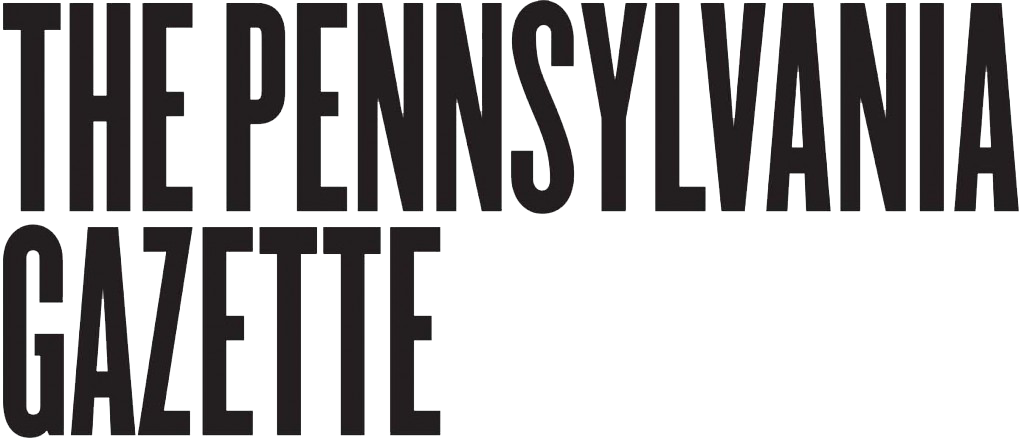A textile artist works his magic on scarves.
The burnout velvet scarves made by Kevin O’Brien, C’81, GFA’87, in his Philadelphia studio, are as much fine art as fine apparel. Viewed straight in front of a sunlit window, the raised velvet patterns of one creation form black sillhouettes against the transparent silk backing that are striking enoughflowers as big as your palms, with petals radiating out from their centers like spokes of a turning wheel. But start shifting the material around and shimmering colors seem to magically appear, change, and reappear: teal blue, moss green, aubergine, gold.
O’Brien, the magician responsible for this visual feat, takes silk and rayon velvet from China and screen prints designs he’s created onto it with chemicals that “eat” away the rayon, but leave the silk chiffon underside intact. The fabric is then heated. He used to scrape away the acid-eaten pile with little butter knives; now he has a special machine set up to do the job. After it’s washed and dried, O’Brien handpaints layers of color on the fabric and steams it to set the dyes.
A
trip to China while studying painting at Penn’s Graduate School of Fine
Arts and a later trip to Japan exposed him to textile art. He gained
additional experience at the Philadelphia College of Textiles and
Science, where he currently teaches, and his skills have caught the
attention of the fashion industry. Designer Isaac Mizrahi, for instance,
is purchasing fabric for his fall collection from O’Brien’s studio.
O’Brien’s
accessories have taken off, he believes, because in the toned-down
nineties, consumers want something that’s luxurious and unique “without
proclaiming expensive.” (Even though they are. His scarves typically
sell for $200 to $400 in upscale department stores such as Neiman Marcus
and in the Metropolitan Museum of Art gift catalogue, but O’Brien is
also making less expensive scarves for the Dana Buchman label).
Big-name
designers have grand plans for velvet this fall, but not like O’Brien,
whose collection includes handbags and upholstery. “What they do is buy
yardage available commercially, then they cut it. Ours is much more
specifically made for the item it’s going to be made into,” he said.
“It’s much more of a fine arts-type product.”
By Susan Lonkevich

